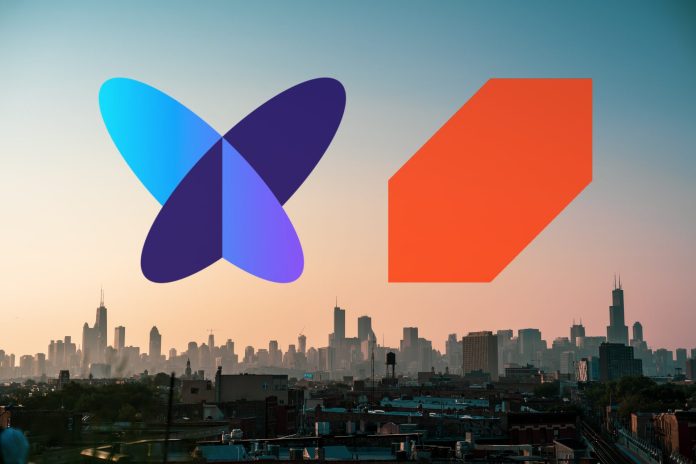Heliot Europe, the biggest Sigfox operator in Europe, has joined the MIOTY Alliance, the group promoting MIOTY as an alternative to low-power IoT technologies like Sigfox, as well as LoRaWAN and NB-IoT. The move, which might once have been considered by the Sigfox crowd as a provocative one, has been broadly welcomed, and hints at a closer working relationship between the two IoT ecosystems, arguably playing catchup to LoRaWAN and NB-IoT.
Heliot Europe runs Sigfox networks in Germany, Switzerland, Austria, Slovenia and Liechtenstein. The Switzerland-based firm acquired the German network operation from Sigfox a couple of years back, as part of a takeover deal by Luxembourg-based venture capital firm Cube Infrastructure Managers. It was in the early running to buy Sigfox, itself, when the France-based tech business went into receivership at the start of the year.
MIOTY (a portmanteau of MY IOT; stylised as ‘mioty’) is a relatively new challenger on the crowded low-power wide-area (LPWA) IoT block, emerging in 2018/19 to replace the Wireless Meter Bus (M-Bus) standard that has underpinned smart metering in Europe, as well as in certain markets in Asia and Latin America. MIOTY is only the go-to-market brand, in fact; it uses the ETSI-defined telegram-splitting ultra-narrowband (TS-UNB) specification.
The MIOTY Alliance was formed in early 2020 by the Fraunhofer Institute for Integrated Circuits, which helped to standardise TS-UNB in ETSI; founding members also include US chip vendor Texas Instruments, German tech firm Diehl, German automation outfit ifm, Austrian oil-and-gas specialist Ragsol, German electronics firm Stackforce, and UK sensor maker WIKA, plus Canada-based BehrTech, which licenses the technology, and sells branded solutions.
Heliot Europe’s membership of the alliance is notable on the grounds early marketing around MIOTY was largely geared around tech-bashing of rival LPWA products, mostly via Fraunhofer-authored technical comparisons, especially with LoRaWAN, but also with narrowband Sigfox. But since Sigfox’s sale in April to Taiwan-based Unabiz – and actually since way before – the talk on the wider Sigfox-side of the IoT divide has been about collaboration.
In particular, Sigfox co-chief Henri Bong has talked in these pages, at some length, about a “unified LPWA networking world”, where Sigfox plays strategically ‘nice’ with the likes of LoRaWAN and NB-IoT, as the nominal king-tech in the wide-area IoT space, but also with the likes of MIOTY and Wi-SUN, notably, both later to the game, perhaps, but also better-specified for battery-power IoT, arguably.
Philippe Chiu – Bong’s partner, childhood friend, and Unabiz co-founder; now sharing the chief executive position with Bong at Unabizz – told Enterprise IoT Insights at a chance meeting at the LoRaWAN World Expo event in Paris in July that he was on summer tour, effectively, of the European IoT conference circuit, stopping also at MIOTY and Wi-SUN events to raise support for a closer “unified LPWA networking world”.
In a statement, Heliot Europe said membership of the MIOTY Alliance follows close collaboration since July. It said the move represents an “expansion” of its portfolio and “scope of action… in areas such as smart cities or smart buildings”, which would precipitate an “exchange of knowledge” around “massive IoT’. It made clear Sigfox remains its primary IoT technology solution, at least in its home markets, and where infrastructure exists elsewhere.
The motivation, it suggested, is to offer global IoT solutions to larger-sized enterprise customers. It stated: “The technology complements Heliot Europe’s existing Sigfox network. By collecting data through multiple channels, Heliot Europe increases the meaningfulness of the information collected. Applications such as asset tracking or monitoring can thus be carried out even more reliably across national borders.”
Guillaume Noel, chief strategy officer at Heliot Europe, commented: “MIOTY is an important addition to our static networks, making it particularly useful… in smart buildings, cities, and infrastructure. The alliance brings together IoT providers from various industries and application areas [to promote] the professional exchange of technologies and experiences. With other members, we want to contribute to, for example, improving the overall interoperability of IoT.”
Christian Postel, chief strategy officer at Heliot Europe, said: “We are constantly working on expanding our horizon of impact. Be it with regard to our range of services, our technologies or our partners. The MIOTY Alliance embodies this idea aptly – so membership is an important step in the right direction.”
MIOTY’s big promise is for higher reliability and performance, compared to rival tech. Heliot Europe stated: “It requires a power of around 35 millijoules for a data packet of 20 bytes. In rural areas, information of 250 bytes can be transmitted up to 15 kilometres. It is possible to reliably send up to 3.5 million messages per day and per base station with a packet error rate of less than one percent.”
The Sigfox/MIOTY tie-up, via Heliot Europe, was welcomed on social media by Unabiz/Sigfox execs, as well as the MIOTY crowd. Meanwhile, following Chiu’s nomination as co-chief executive at Unabiz, the firm has appointed Alexis Susset – formerly with KDDI-owned Sporacom, an investor in Unabiz, as well as a 10-year veteran of Vodafone – as chief technology officer.

